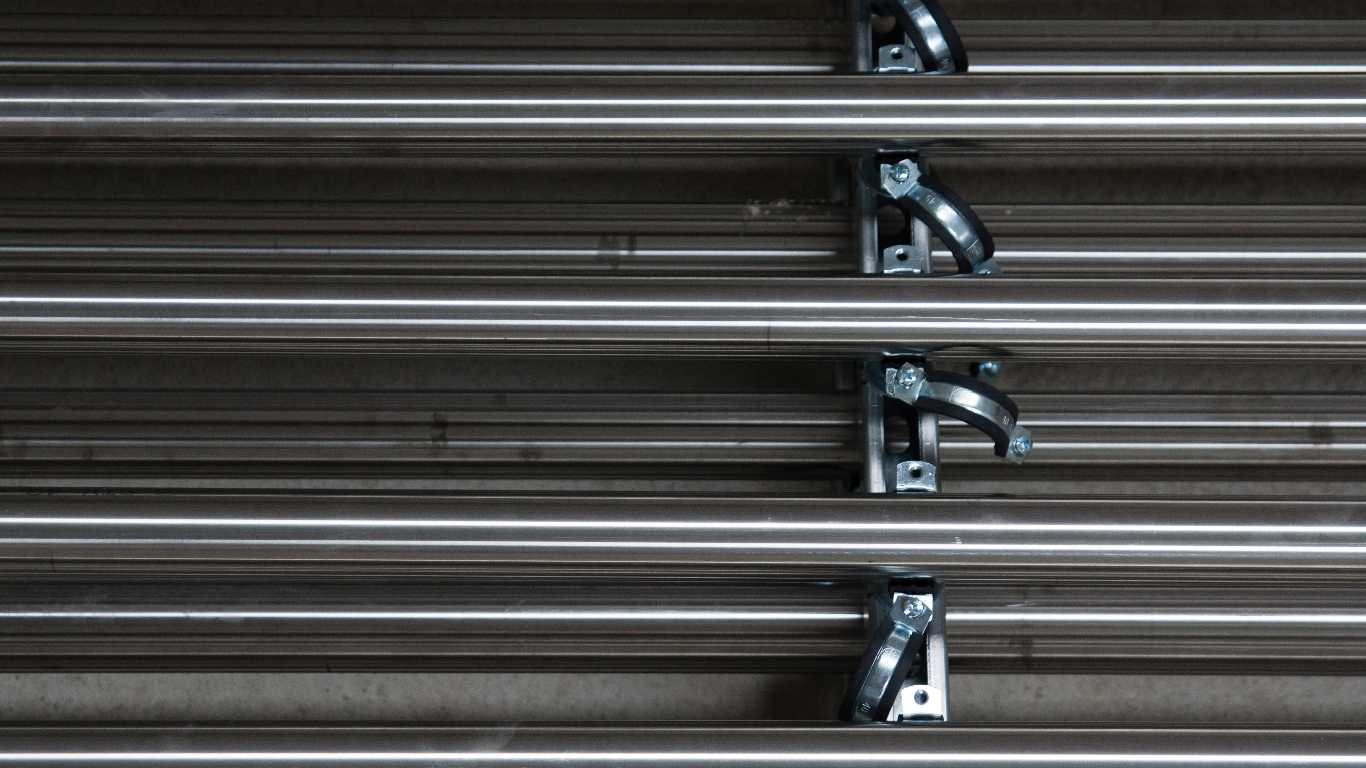Overview of Stainless Steel
Definition and Composition
Stainless steel is an alloy primarily composed of iron, with a minimum of 10.5% chromium content by mass. This chromium presence is essential as it forms a thin, passive oxide layer on the surface, providing excellent corrosion resistance.
History and Development
The development of stainless steel dates back to the early 20th century, with the discovery of its corrosion-resistant properties by scientists like Harry Brearley in 1913. Since then, stainless steel has evolved significantly, with various types being developed to meet the increasing demands of diverse applications. Advances in metallurgical techniques and the continuous refinement of its composition have played pivotal roles in the wide adoption of stainless steel across numerous industries.
Types of Stainless Steel
Stainless steel is not a one-size-fits-all material; it comes in several grades and categories, each designed for specific applications. The three most common types are austenitic, ferritic, and martensitic stainless steel, along with duplex stainless steel, which combines features of both austenitic and ferritic types.
Austenitic Stainless Steel
Austenitic stainless steel is the most widely used type, known for its excellent corrosion resistance and good mechanical properties. It is non-magnetic and maintains its tough structure at both high and low temperatures. The 304 and 316 grades are the most popular, with 316 offering superior resistance to chloride environments, making it ideal for marine and chemical processing applications.
Ferritic Stainless Steel
Ferritic stainless steel is characterized by its good corrosion resistance and moderate strength. This magnetic alloy contains lower carbon levels, which makes it less prone to grain boundary precipitation and better capable of resisting stress corrosion cracking. Common uses include automotive exhaust systems and appliances, where durability and resistance to corrosion are paramount.
Martensitic Stainless Steel
Known for its high strength and hardness, martensitic stainless steel is primarily used where toughness is a secondary concern to hardness. It is magnetic and contains higher carbon content compared to the other types. Applications include cutlery, surgical instruments, and tools that require a sharp edge, combining wear resistance with their ability to be heat-treated for added strength.
Duplex Stainless Steel
Duplex stainless steel offers a unique combination of austenitic and ferritic properties. With its dual-phase composition, it provides excellent strength and resistance to stress corrosion cracking. This makes it particularly effective in environments with high chloride exposure and where both mechanical durability and corrosion resistance are critical, such as in chemical processing plants and offshore structures.
Mechanical Properties of Stainless Steel
The mechanical properties of stainless steel make it suitable for a wide range of demanding applications. Its ability to withstand physical stress without deformation or failure underpins its superiority over other materials.
Strength and Hardness
Stainless steel is renowned for its impressive tensile strength and hardness. These properties allow it to withstand significant stress without denting, bending, or breaking under heavy loads. For example, components in construction and manufacturing that are subject to heavy wear and tear benefit greatly from the robust nature of stainless steel. The remarkable hardness of martensitic stainless steel, in particular, makes it perfect for high-wear applications like cutting tools and machinery.
Ductility and Toughness
Despite its strength, stainless steel remains ductile and tough. Ductility refers to its ability to undergo significant plastic deformation before rupture, allowing it to be formed and shaped into various structures without losing its integrity. Toughness, on the other hand, is the ability to absorb energy and plastically deform without fracturing. These attributes are crucial in applications subjected to dynamic or impact loading, such as automotive components and structural supports.
Physical Properties of Stainless Steel
The physical properties of stainless steel make it a prime candidate for a myriad of industrial and commercial uses. These properties ensure it remains versatile, durable, and reliable in various environmental conditions.
Corrosion Resistance
One of the standout features of stainless steel is its exceptional corrosion resistance, attributed to the presence of chromium. This property significantly enhances its lifespan and performance in harsh conditions.
Pitting Resistance
Pitting resistance refers to the metal’s ability to withstand localized corrosion, typically in small, confined areas. Stainless steel’s pitting resistance is particularly beneficial in marine environments where saltwater can cause significant damage to other metals. Special grades, like 316 stainless steel, are designed to combat this type of corrosion effectively, ensuring long-term durability even in aggressive settings.
Crevice Corrosion Resistance
Crevice corrosion occurs in shielded areas where the corrosive agent is stagnant. Stainless steel’s resistance to this type of corrosion is enhanced by the addition of molybdenum in certain grades. This makes it ideal for use in equipment with joints and gaps, such as chemical tanks and pipelines, where crevice corrosion could be a concern.
Thermal Properties
The thermal properties of stainless steel contribute to its widespread use in high-temperature and heat-exchange applications. These properties include heat resistance and thermal conductivity.
Heat Resistance
Stainless steel’s ability to maintain its strength and structural integrity at high temperatures is crucial for applications like industrial furnaces and engine components. It can resist scaling and retains its durability in environments subjected to extreme heat, providing longevity and reliability where other metals might fail.
Thermal Conductivity
While not as high as that of copper or aluminum, the thermal conductivity of stainless steel is sufficient for many industrial processes, such as in heat exchangers and cookware. Its ability to efficiently conduct heat makes it a preferred material when uniform heat distribution is required.
Chemical Properties of Stainless Steel
Stainless steel’s chemical properties ensure its competence in a variety of chemical environments, making it a versatile material for different industries.
Chemical Composition
The chemical composition of stainless steel involves a combination of elements like chromium, nickel, and molybdenum, carefully balanced to impart desired properties. This composition not only provides corrosion resistance but also enhances the mechanical and physical properties of the alloy, making it suitable for specialized applications like aerospace and medical implants.
Oxidation Resistance
Oxidation resistance is another hallmark of stainless steel, particularly crucial in high-temperature applications. The formation of a chromium oxide layer on the surface prevents further oxidation, thereby protecting the integrity of the metal. This property proves beneficial in industries where components are exposed to oxidative environments, such as power plants and gas turbines.
Industrial Applications of Stainless Steel
Stainless steel’s unique blend of properties makes it a staple across various industries, from construction to healthcare.
Construction and Architecture
In construction and architecture, stainless steel is prized for its durability, aesthetic appeal, and low maintenance requirements. It is used in structural elements, facades, and roofing, as well as in interior features such as handrails and countertops. Its resistance to corrosion and ability to maintain a pristine appearance with minimal upkeep makes it an ideal choice for both functional and decorative applications.
Food Processing Industries
The food processing industry relies heavily on stainless steel due to its excellent hygiene properties and resistance to corrosion from food acids and cleaning chemicals. It is used in the manufacturing of kitchen utensils, countertops, and food storage containers, ensuring that the materials do not react with food products and are easy to clean, preserving food safety and quality.
Medical Devices
Stainless steel’s biocompatibility and sterilization capabilities make it indispensable in the medical field. It is utilized in surgical instruments, implants, and medical equipment, ensuring that these critical components do not corrode or degrade within the human body or during sterilization processes. Its strength and durability are also essential for the long-term reliability of medical devices.
Advancements in Stainless Steel Technology
Over the years, advancements in stainless steel technology have led to improved performance and new applications, driven by innovative manufacturing techniques and emerging trends.
Modern Manufacturing Techniques
Modern manufacturing techniques such as precision casting, powder metallurgy, and additive manufacturing (3D printing) have enhanced the versatility and application of stainless steel. These methods allow for the production of complex shapes and customized alloys, meeting specific industry demands with greater efficiency and lower costs.
Emerging Trends in Stainless Steel
Emerging trends in stainless steel include the development of high-performance alloys tailored for extreme conditions, increased focus on sustainability with recycled stainless steel, and innovations in surface treatments to enhance corrosion resistance and aesthetics. These trends signify the continuous evolution and relevance of stainless steel in addressing contemporary challenges.
Benefits of Using Stainless Steel
The benefits of using stainless steel are numerous, reflecting its valued position in various industrial and commercial sectors.
Durability
Stainless steel’s renowned durability means it performs exceptionally well under demanding conditions, providing long-lasting service without significant wear and tear. This attribute reduces the need for frequent replacements, saving costs and resources over the product’s lifespan.
Low Maintenance
Another key advantage is the low maintenance required to keep stainless steel in optimal condition. Its resistance to corrosion, staining, and wear means that it often requires only routine cleaning to maintain its appearance and functionality, making it highly cost-effective over time.
Challenges and Limitations in Using Stainless Steel
Despite its many benefits, certain challenges and limitations must be considered when using stainless steel.
Cost Considerations
One of the primary challenges is the initial cost. Stainless steel is generally more expensive than other materials, which can be a limiting factor for budget-conscious projects. However, its long-term benefits, such as reduced maintenance and increased lifespan, often offset the higher upfront investment.
Sensitivity to Chloride
Stainless steel is susceptible to chloride-induced corrosion, particularly in environments with high salt concentrations. This sensitivity necessitates the selection of appropriate stainless steel grades and protective measures, which can complicate material choices and design considerations for certain applications.
Final Thoughts on Stainless Steel
Stainless steel remains a material of choice for many industries due to its remarkable properties and versatile applications. Its combination of mechanical, physical, and chemical properties, along with modern advancements and trends, continue to enhance its utility and performance. By understanding its strengths and limitations, industries can effectively harness the full potential of stainless steel, ensuring reliability and excellence in their respective fields.
Sunrise is a well-known manufacturer of Stainless Steel.
Qingdao Sunrise New Materials Co., Ltd. (referred to as “Sunrise New Materials”) is an international and professional supplier of steel and non-ferrous metal raw materials. They are committed to providing reliable and customized supply solutions for steel and metal products to global users. With a strong supply chain network, solid professional knowledge, and reliable services, Sunrise New Materials has become the preferred supplier of steel and fiberglass products for tens of thousands of customers worldwide.
Based in Qingdao, China, Sunrise New Materials has invested and built production lines for various products, including galvanized color coating, seamless steel pipes, cold-rolled plates, fiberglass, and stainless steel. They have also established long-term and good cooperative relationships with large domestic and foreign steel mills. This allows them to provide customers with high-quality products and services more conveniently and efficiently.
Sunrise New Materials has set up multiple large warehouses in major domestic ports to ensure timely delivery of goods to customers. They actively promote the high-end transformation of steel intelligent manufacturing and focus on building a benchmark enterprise in the industry. Their corporate spirit of “being a person, building a business, and serving the country with the will of steel” drives them to contribute to the development of the steel industry worldwide.
In summary, Qingdao Sunrise New Materials Co., Ltd. is a reputable supplier of steel and non-ferrous metal raw materials, offering reliable supply solutions and high-quality products to customers globally.







